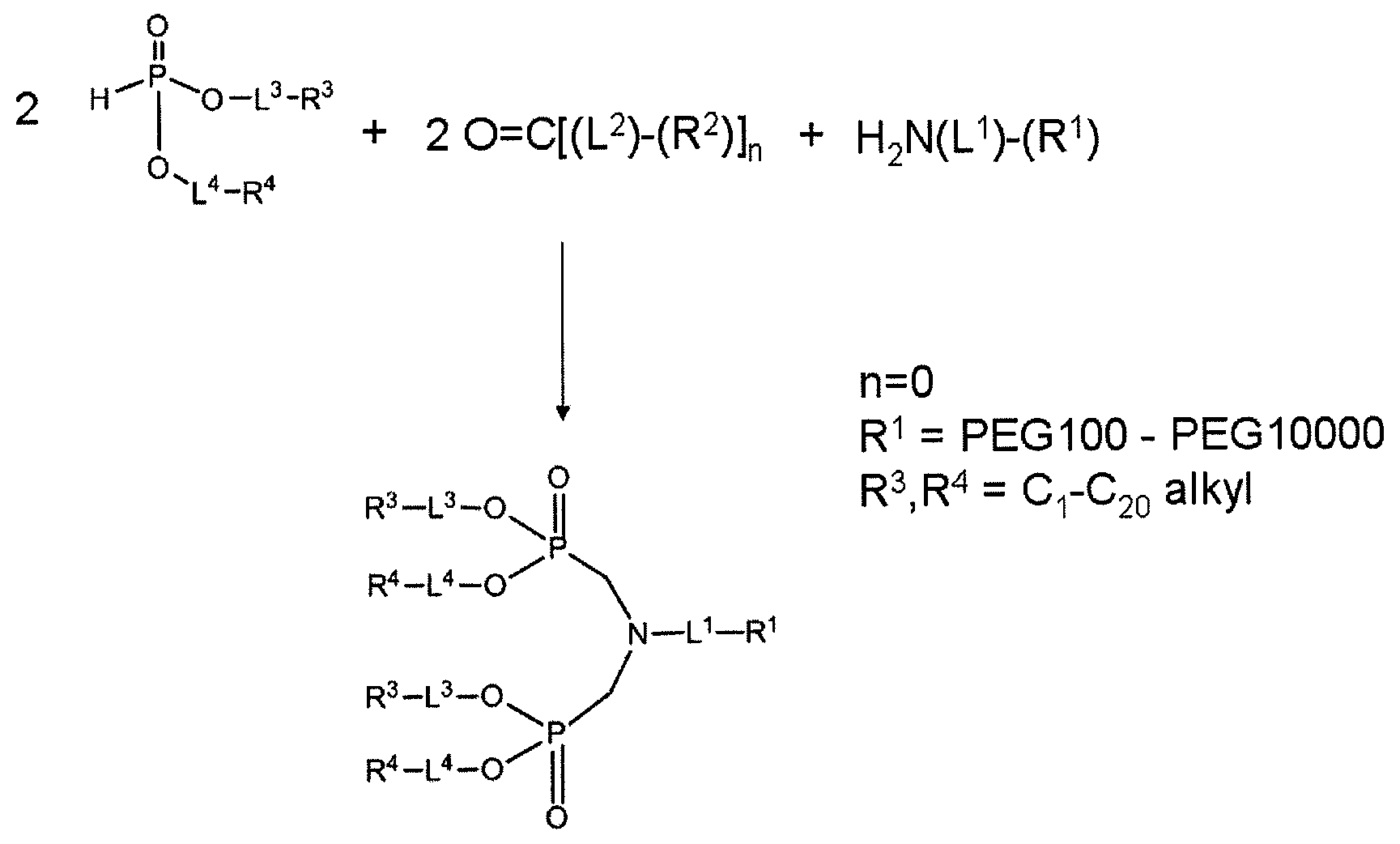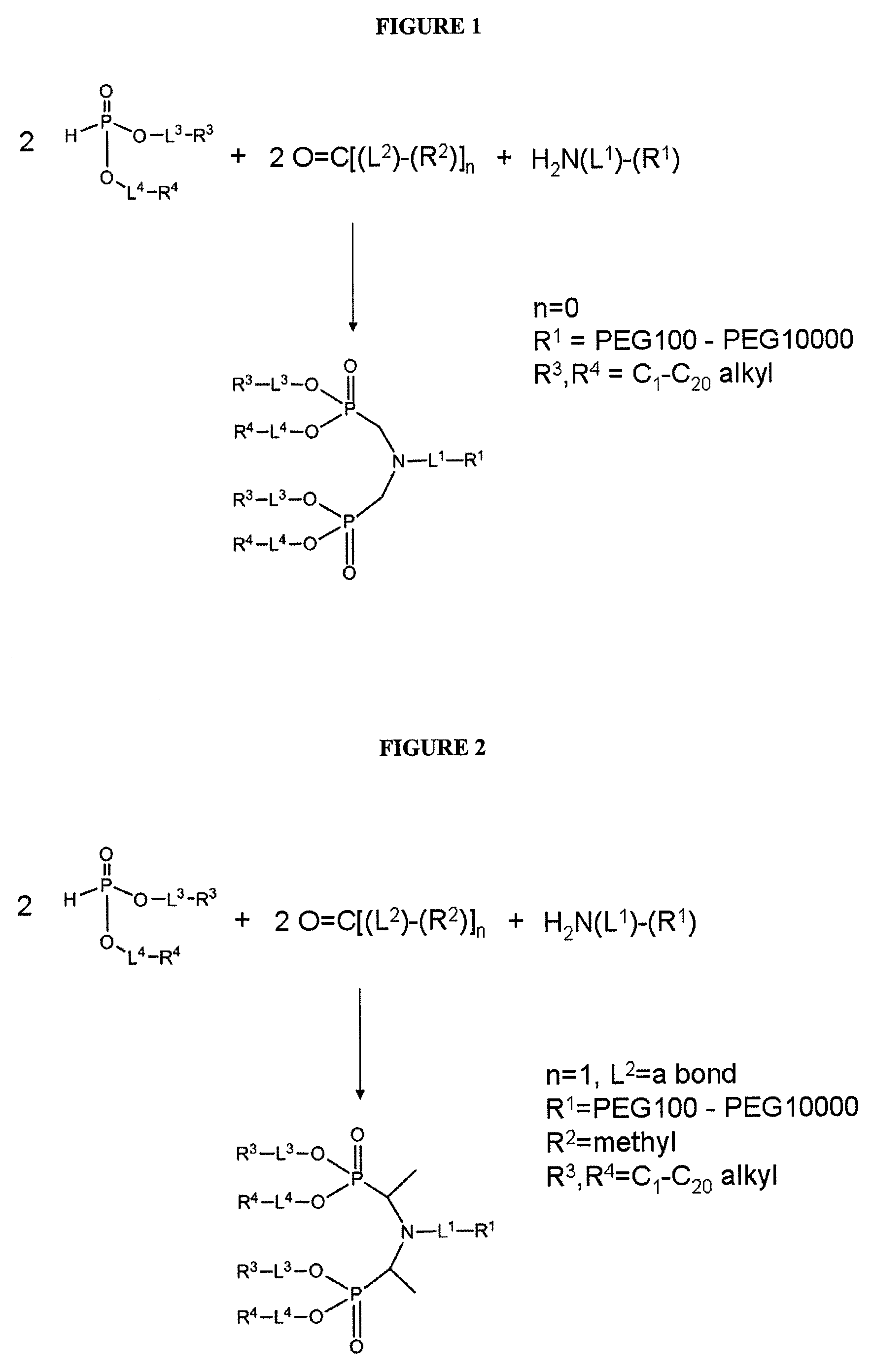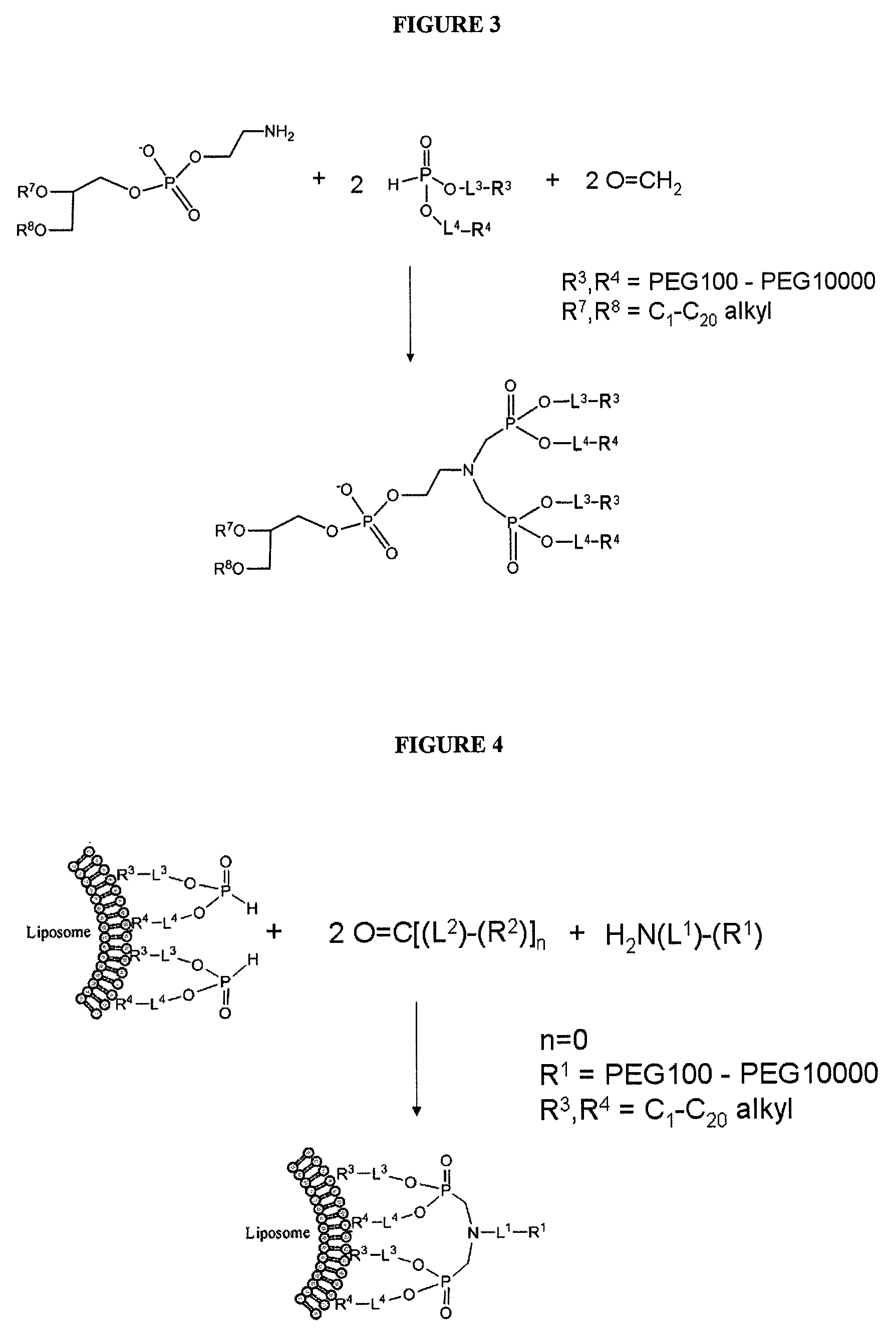Nanoparticle PEG modification with H-phosphonates
a technology of hphosphonates and nanoparticles, applied in the direction of nitro compound active ingredients, drug compositions, applications, etc., can solve the problems of reducing the efficacy of therapeutics as well as side effects, current delivery methods, and current approaches to modifying nanoparticles, and achieves targeted delivery performance and in vivo circulation times.
- Summary
- Abstract
- Description
- Claims
- Application Information
AI Technical Summary
Benefits of technology
Problems solved by technology
Method used
Image
Examples
example 1
Preparation of Dialkyl Hydrogen Phosphonates
[0136]A generalized synthetic procedure was used to produce dialkyl hydrogen phosphonates that could be further reacted to form some of the compounds of the present invention. As depicted in FIG. 6, the general reaction scheme was to combine diphenyl phosphite with a 1-alkanol to form the dialkyl hydrogen phosphonates. The following dialkyl hydrogen phosphonates were prepared as follows:
[0137]
DialkylProductn1-alkanol1-alkanol MWphosphonateMW11C12H26O1-dodecanolC24H51O3P418.63186.3313C14H30O1-tetradecanol C28H59O3P474.74214.3915C16H34O 1-hexadecanolC32H67O3P530.85242.4417C18H38O1-octadecanolC36H75O3P586.95270.4921C22H46O1-docosanolC44H91O3P699.17326.60
[0138]In a 2-5 mL microwave vial, 3-6 mmol of diphenyl phosphite and 2.1 equivalents of the 1-alkanol were added. 2 equivalents (by volume) of anhydrous pyridine were syringed into vial, and the vial was sealed by crimping the top. The reaction mixture was exposed to microwave radiation using ...
example 2
Preparation of Dioctadecyl Hydrogen Phosphonate
[0140]
[0141]To a 125 mL round-bottom flask (RBF) equipped with mechanical stirrer and thermocouple were added 1-octadecanol (25.41 g, 0.0939 mole, 2.2 eq.), diphenyl phosphite (10.0 g, 0.0427 mole, 1.0 eq.), and pyridine (4.053 g, 0.5124 mole, 1.2 eq) and the mixture was heated to 75° C. After 2.5 h, the completion of the reaction was checked by 31P NMR (CDCl3): product at 7.8 ppm, intermediate mono-octadecyl phenyl phosphonate at 4.2 ppm, diphenyl phosphate at 0.35 ppm. The reaction showed ca. 94% (by integration) product, 1.5% intermediate, and 4.6% of a peak at 5.5 ppm. The mixture was cooled to 40-50° C., and ca. 50 mL dichloromethane was slowly added to prevent the material from solidifying and seizing the stirrer. The mixture was further diluted with 150 mL dichloromethane and transferred to a separatory funnel. The mixture was washed with 50 mL water, extracted with 3×75 mL 3N hydrochloric acid, and further washed with 75 mL each...
example 3
Preparation of Diolelyl Hydrogen Phosphonate
[0144]
[0145]To a 125 mL RBF equipped with mechanical stirrer and thermocouple were added olelyl alcohol (30.85 g, 0.115 mol, 2.2 eq.), diphenyl phosphite (12.23 g, 0.0522 mol, 1 eq.), and pyridine (4.96 g, 0.0627 mol, 1.2 eq.). The mixture was heated to 65° C. for 3 h. Completion of reaction was checked by 31P NMR (CDCl3, 7.76 ppm). The mixture was cooled to 2SO4 and concentrated to give a colorless oil. The neat oil was transferred to a 250 mL separatory funnel and washed with 6×50 mL of acetonitrile (ACN). Yield: 19.86 g (65.2%). High Resolution Mass Spectrometry (HRMS): [M+Na]+ calculated 605.5033, observed 605.5015: 31P NMR (500 MHz, CDCl3)=7.734 ppm. 1H and 13C NMR are consistent with desired structure.
PUM
| Property | Measurement | Unit |
|---|---|---|
| size | aaaaa | aaaaa |
| size | aaaaa | aaaaa |
| size | aaaaa | aaaaa |
Abstract
Description
Claims
Application Information
 Login to View More
Login to View More - R&D
- Intellectual Property
- Life Sciences
- Materials
- Tech Scout
- Unparalleled Data Quality
- Higher Quality Content
- 60% Fewer Hallucinations
Browse by: Latest US Patents, China's latest patents, Technical Efficacy Thesaurus, Application Domain, Technology Topic, Popular Technical Reports.
© 2025 PatSnap. All rights reserved.Legal|Privacy policy|Modern Slavery Act Transparency Statement|Sitemap|About US| Contact US: help@patsnap.com



